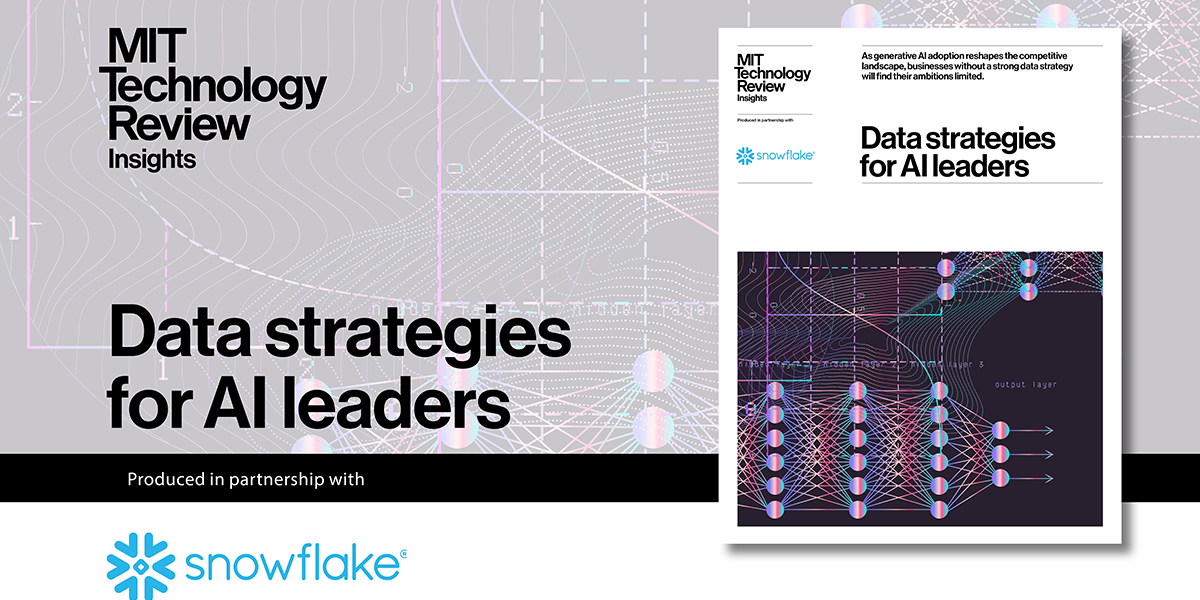Great expectations for generative AI
The expectation that generative AI could fundamentally upend business models and product offerings is driven by the technology’s power to unlock vast amounts of data that were previously inaccessible. “Eighty to 90% of the world’s data is unstructured,” says Baris Gultekin, head of AI at AI data cloud company Snowflake. “But what’s exciting is that AI is opening the door for organizations to gain insights from this data that they simply couldn’t before.”
In a poll conducted by MIT Technology Review Insights, global executives were asked about the value they hoped to derive from generative AI. Many say they are prioritizing the technology’s ability to increase efficiency and productivity (72%), increase market competitiveness (55%), and drive better products and services (47%). Few see the technology primarily as a driver of increased revenue (30%) or reduced costs (24%), which is suggestive of executives’ loftier ambitions. Respondents’ top ambitions for generative AI seem to work hand in hand. More than half of companies say new routes toward market competitiveness are one of their top three goals, and the two likely paths they might take to achieve this are increased efficiency and better products or services.
For companies rolling out generative AI, these are not necessarily distinct choices. Chakraborty sees a “thin line between efficiency and innovation” in current activity. “We are starting to notice companies applying generative AI agents for employees, and the use case is internal,” he says, but the time saved on mundane tasks allows personnel to focus on customer service or more creative activities. Gultekin agrees. “We’re seeing innovation with customers building internal generative AI products that unlock a lot of value,” he says. “They’re being built for productivity gains and efficiencies.”

Chakraborty cites marketing campaigns as an example: “The whole supply chain of creative input is getting re-imagined using the power of generative AI. That is obviously going to create new levels of efficiency, but at the same time probably create innovation in the way you bring new product ideas into the market.” Similarly, Gultekin reports that a global technology conglomerate and Snowflake customer has used AI to make “700,000 pages of research available to their team so that they can ask questions and then increase the pace of their own innovation.”
The impact of generative AI on chatbots—in Gultekin’s words, “the bread and butter of the recent AI cycle”—may be the best example. The rapid expansion in chatbot capabilities using AI borders between the improvement of an existing tool and creation of a new one. It is unsurprising, then, that 44% of respondents see improved customer satisfaction as a way that generative AI will bring value.
A closer look at our survey results reflects this overlap between productivity enhancement and product or service innovation. Nearly one-third of respondents (30%) included both increased productivity and innovation in the top three types of value they hope to achieve with generative AI. The first, in many cases, will serve as the main route to the other.
But efficiency gains are not the only path to product or service innovation. Some companies, Chakraborty says, are “making big bets” on wholesale innovation with generative AI. He cites pharmaceutical companies as an example. They, he says, are asking fundamental questions about the technology’s power: “How can I use generative AI to create new treatment pathways or to reimagine my clinical trials process? Can I accelerate the drug discovery time frame from 10 years to five years to one?”
Download the full report.
This content was produced by Insights, the custom content arm of MIT Technology Review. It was not written by MIT Technology Review’s editorial staff.




